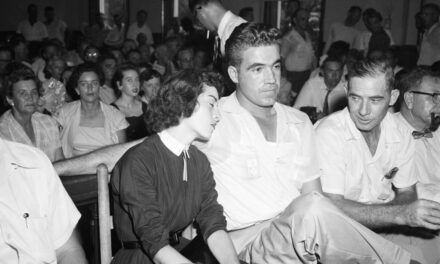By Madison Peek,
The Howard Center For Investigative Journalism
James White looked at the barren ground in Elaine, Arkansas, where a memorial tree dedicated to hundreds of Black lynching victims once grew and reflected on his hometown.
White grew up in Elaine, where few talk about the horrific massacre that claimed hundreds of Black lives in 1919. The willow tree was supposed to provide a place to remember their legacy. Now, it’s gone.
“It looks like a friendly little town, but it’s really not,” White said. The first tree was chopped down, he said, and a second mysteriously died.
The repeated vandalization of Elaine’s willow tree is one of many episodes across the country where memorials honoring the memory of lynching victims have been defaced or destroyed.
In 2020, the FBI reported more than 2,400 hate crimes that involved the destruction, damage or vandalization of property. The majority of reported hate bias incidents were anti-Black.
In Mississippi, next to the banks of the Tallahatchie River, a memorial to Emmett Till has been pierced with bullets, stolen and thrown into the river where Till’s body was found after his lynching in 1955. Till was 14 at the time.
Monuments are tributes from people who have the power to put them up at the time.
They “are products of historical processes … but in no way are they history books. A better way to think of them is as sound bites,” said Dell Upton, distinguished research professor at the University of California, Los Angeles.“Monuments are put up by the people who have the power to put them up at the time.”
It’s a marked historical pattern, stretching back to the earliest monuments.
Many Confederate statues were put up after the Civil War as thinly veiled “political monuments, statements of continuing allegiance to the Confederacy, and to the white supremacy upon which it was built,” Upton said.
When Black politicians and leaders became more prominent during the Civil Rights era of the 1960s, monuments honoring Black history began to crop up across the country, according to historians.
In Tallahatchie County, Mississippi, it took over 30 years after Till was lynched to have his murder acknowledged, said Nancy Bercaw, a curator of the slavery and freedom exhibition at the Smithsonian National Museum of American History. Then it happened only after Black officials were elected to office.
Till’s marker is one of the most publicly and consistently vandalized lynching memorials in the country. The marker has had four incarnations. The first was stolen and thrown in the river and the second was shot 317 times. The third tribute to the teenager’s life was shot and destroyed again and the fourth, a bullet-proof sign, was put up in 2019. It was stolen in September of last year.
The second variation of Till’s marker is now housed at the Smithsonian’s National Museum of American History in Washington.

“This is the first time that there’s been an exhibit on Till that doesn’t just end in 1955 with his murder,” Bercaw said. “But what we’re really looking at is this long history of anti-Black violence in America that continues up to this present moment. And I think that’s what the vandalization of the signs is really about.”
The exhibit, placed in front of the Star-Spangled Banner, invites the viewer to reflect on America’s past and how its racist roots still infect American culture today, Bercaw said.
Bercaw emphasized the hard-fought work of local communities pushing to reckon with their racist pasts. In documenting the untold Black stories and hopes, “the Smithsonian can play a role in convening, and in elevating, and in shining a spotlight on this decades-long struggle.”
Help us Continue to tell OUR Story and join the AFRO family as a member – subscribers are now members! Join here!
The post #WordinBlack: Memorials to lynching victims challenge who writes nation’s history appeared first on AFRO American Newspapers .










